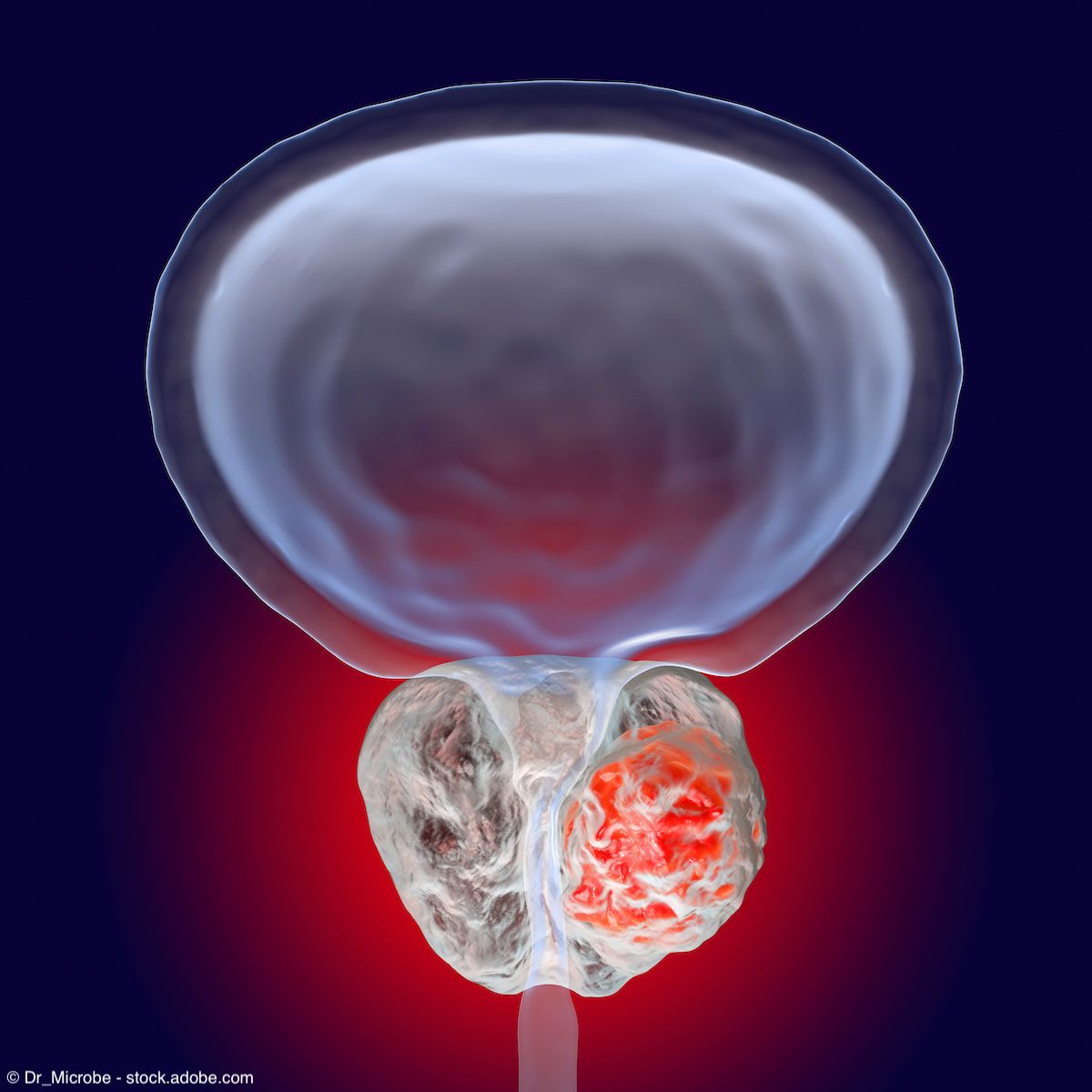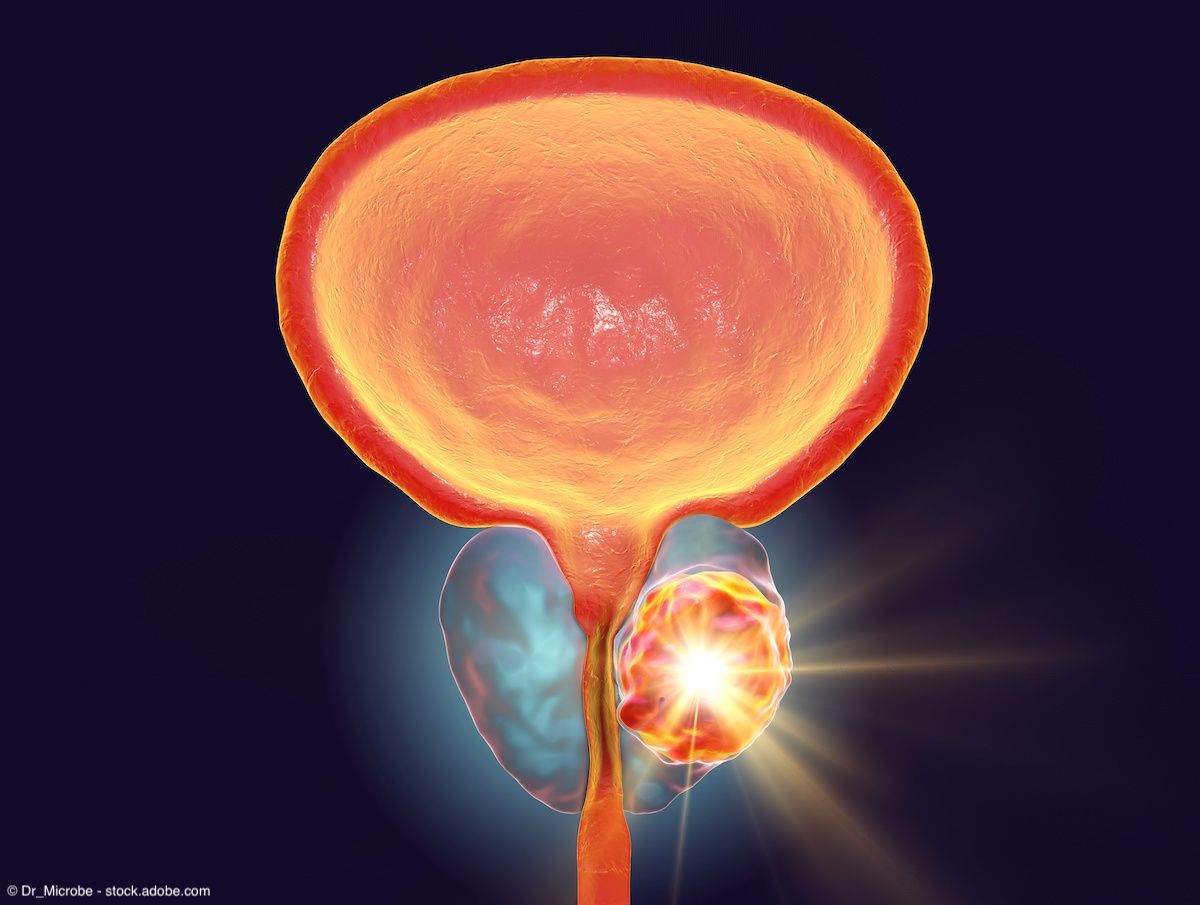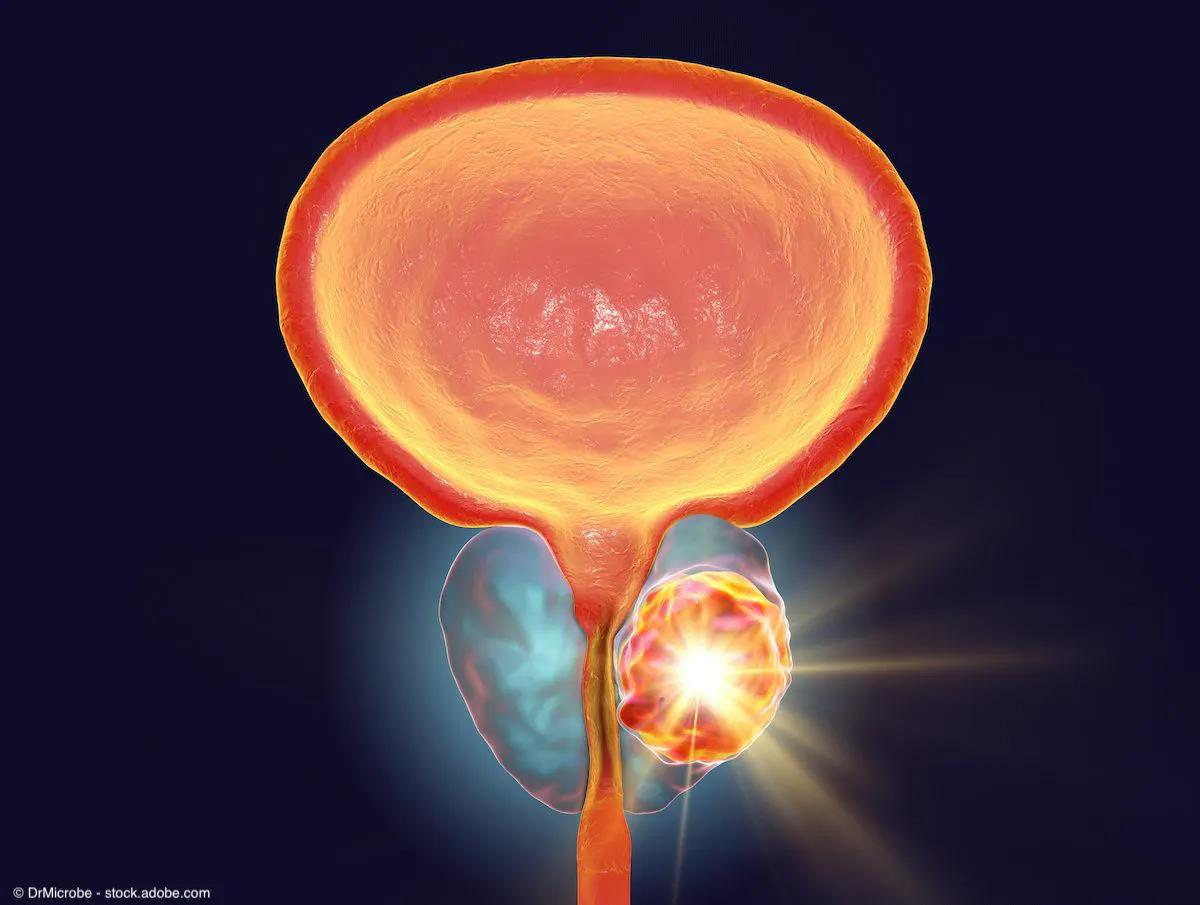News
Article
Genetic test can predict risk of toxicity following radiation for prostate cancer
Author(s):
Key Takeaways
- PROSTOX ultra test predicts late-grade GU toxicity in patients with prostate cancer postradiation, with an AUC of 0.762.
- The test's sensitivity and specificity were 0.576 and 0.948, respectively, in the MIRAGE cohort.
"This finding reinforces PROSTOX ultra as a true measure of the biological response to radiation, independent of treatment era or technique that can identify the safest course of treatment to avoid toxicity," says Amar U. Kishan, MD.
The PROSTOX ultra test, which consists primarily of microRNA single-nucleotide polymorphisms (mirSNPs), demonstrated the ability to predict which patients may experience late-grade genitourinary (GU) toxicity following radiation treatment for prostate cancer.1,2
The findings were published in Clinical Cancer Research.
The investigators assessed data from the phase 3 MIRAGE trial.

"These findings represent a very important moment in the treatment of prostate cancer and for the field of oncology treatment as a whole," said senior author Joanne B. Weidhaas, MD, PhD, a professor at the David Geffen School of Medicine at the University of California, Los Angeles (UCLA); head of translation research in the Department of Radiation Oncology; and co-founder of MiraDx and founder of MiraKind, in a news release on the findings.2 "While tumor-based molecular profiling tests that inform treatment selection have contributed to improved patient outcomes, no tests based on germline genetics currently exist to identify toxicity risks to treatment. PROSTOX ultra is the first test that predicts radiation toxicity, giving patients and their physicians important information to make decisions that balance effectiveness with long-term quality of life.”
For the study, the investigators assessed data from the phase 3 MIRAGE trial (NCT04384770), which assessed the use of aggressive margin reduction with MRI-guided stereotactic body radiotherapy (SBRT) to standard CT-guided SBRT. The current study included data from 148 patients.
Overall, the PROSTOX ultra test accurately predicted which patients in that trial would experience late grade 2 or greater GU toxicity, with an area under the curve (AUC) of 0.762. In the MRI- and CT-guided arms, the AUC was 0.762 and 0.761, respectively.
The test also demonstrated a sensitivity of 0.576 and a specificity of 0.948 in this cohort. Compared with data from the original training set, the sensitivity was lower (original set, 0.714) and the specificity was similar (original set, 0.924) in the MIRAGE cohort.
The authors noted, “While it should be acknowledged that the sensitivity of PROSTOX was lower in this study than in the original cohort, this could be explained by the use of a different toxicity scoring systems (CTCAE [Common Terminology Criteria for Adverse Events] vs RTOG [Radiation Therapy Oncology Group]), as well as [the] inclusion of pelvic lymph nodes and ADT in this validation study.”
When the investigators used numeric outputs for PROSTOX (as opposed to binary cutoff values), the AUC of PROSTOX was 0.83 in the MRI group and 0.71 in the CT group. A higher PROSTOX score was also correlated with a higher GU toxicity grade overall (lin reg P = 1.2E-9) as well as in the MRI group (lin reg P = 1.7E-7), and the CT group (lin reg P = =0.001).
The authors then used Gene Ontology (GO) analyses to identify unique pathways associated with acute, chronic, and late toxicity.
“Here we found that acute only and chronic GU toxicity have unique mirSNP-based genetic signatures, and that all 3 forms of toxicity have gene pathway alterations based on GO analyses that differentiate them from each other,” the authors wrote.
According to the authors, these findings support the potential of mirSNPs to predict toxicity and “to act as a path for the continued personalization of RT with improved patient outcomes.”
“Advancements in radiation technology, treatment planning, patient care, and follow-up make it challenging to directly compare toxicity between older and more modern treatment approaches,” explained lead author Amar U. Kishan, MD, a radiation oncologist at UCLA, in the news release.2 “Despite these challenges, this study validated PROSTOX ultra as a predictive biomarker, and that a genetic predisposition to increased toxicity persists with modern, high-precision SBRT, including MRI-guided SBRT. This finding reinforces PROSTOX ultra as a true measure of the biological response to radiation, independent of treatment era or technique that can identify the safest course of treatment to avoid toxicity.”
REFERENCES
1. Kishan AU, McGreevy K, Valle L, et al. Validation and derivation of microRNA-based germline signatures predicting radiation toxicity in prostate cancer. Clin Cancer Res. Published online April 7, 2025. doi:10.1158/1078-0432.CCR-24-3951
2. MiraDx announces new study published in Clinical Cancer Research validating PROSTOX ultra diagnostic test for predicting radiation-induced late toxicity in prostate cancer. News release. MiraDx. April 7, 2025. Accessed April 7, 2025. https://www.businesswire.com/news/home/20250404130675/en/MiraDx-Announces-New-Study-Published-in-Clinical-Cancer-Research-Validating-PROSTOX-ultra-Diagnostic-Test-for-Predicting-Radiation-Induced-Late-Toxicity-in-Prostate-Cancer















